Is electrified so that any animal or human with aspirations to touch the friggin tubes will be deterred!
Nice.

Built and manufactured by Dr. Phil Marchand of Rochester, New York, the Marchand Electronics LN112 moving coil (MC) tube phono preamp (SRP: $1,400) is a compact unit with a big, tube-generated sound. The 5 x 3 x 9in (w/h/d) LN112 weighs less than most components, and is about the size of a bottle of scotch. A moving magnet (MM) version of the LN112 is also available (SRP: $1,100). Other Marchand-made gear includes a stepped attenuator volume control, a pair of passive preamps (the PR41 and PR141), the PS125 open frame power amplifier (100WRMS), and a handful of crossovers.
We first reported on the Marchand Electronics LN112 tube phono preamp back in the spring, and knew instantly that we wanted to get our hands on it for testing. The electronics of the Marchand LN112 are situated in a small wooden frame that acts as an insulator. Power is provided via an included 15VDC external power supply. You simply plug it in, it powers up, and off you go into analog land.
Specs for the Marchand LN112 phono preamp include a frequency response of 20Hz-20KHz (±0.25dB), MC input impedance of 10ohms, MC gain of 60dB at 1kHz, S/N ratio in MC mode of 82dB (ref. 0.5mV input at 1kHz, A-weighted), an output load of 10kohms, and maximum output voltage of 7VRMS.
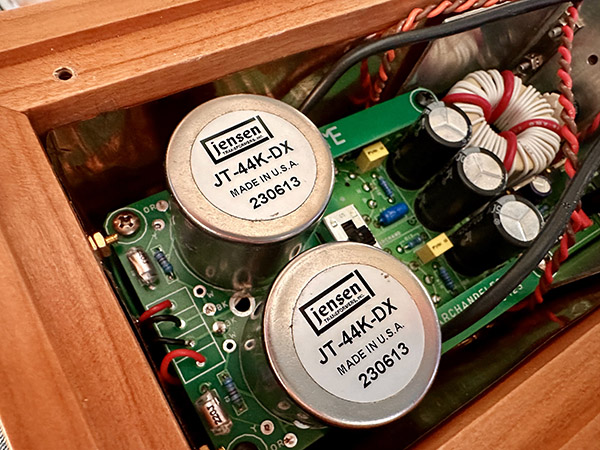
The Marchand LN112 includes an 8Hz subsonic filter that “reduces unwanted cone movements due to record warp, etc.,” according to the Marchand site. Marchand told me the MC version of the phono preamp also includes a set of “high performance Jensen MC transformers built into the unit. This gives the additional 20dB of gain required for the MC cartridge.”
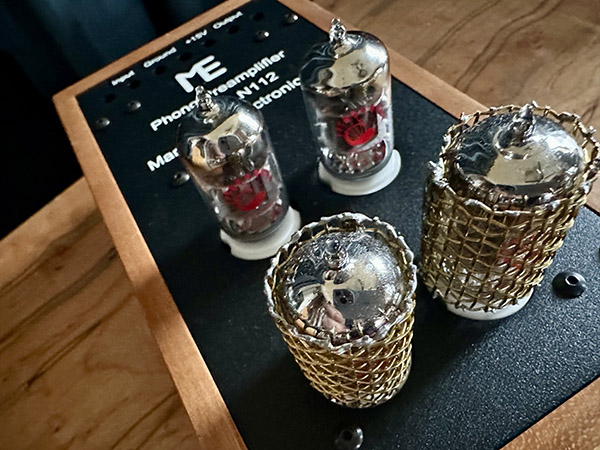
Additionally, Marchand noted that “we use the highest quality parts,” further clarifying that statement to mean “precision metal film resistors and WIMA polypropylene capacitors for superior sound. The preamp uses four Psvane 12AX7WA dual triode tubes. [Two of the tubes are surrounded by a metal mesh grid to lessen the chance of hum.] The RIAA network uses a passive configuration. The power for the filaments is regulated 12VDC, using an internal voltage regulator. A DC/DC converter steps the 12V to 240VDC plate voltage. The LN112 can be powered directly from a 12V battery (lead-acid battery), or from AV with adapter included.”
Finally, Marchand told me, via email, that he has “been building electronics for 60 years. I have an MS degree in physics, and a PhD in imaging science.” Let’s see how well the good doctor put all that high-end knowledge to use with the Marchand LN112 phono preamp.
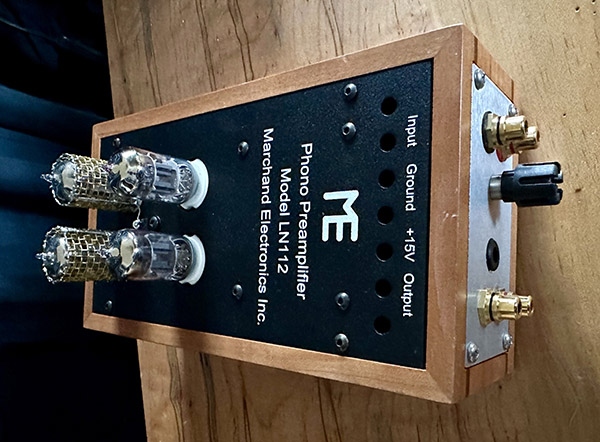
Setup
There is one features caveat about the Marchand LN112 worth noting. The unit currently has no on/off button, which meant I had to plug and unplug its two-piece power cable every time it was in use. A bit of a hassle, to be sure — but Dr. Marchand confirms that he’s working on it for, we think, an eventual update/next-gen model.
At any rate, for my review of the Marchand LN112 phono preamp, ancillary components included a Thorens TD 124 turntable, Luxman LMC-5 MC cartridge, The Wand tonearm (which itself will be reviewed separately here on AP in the not-too-distant future), Triode Lab 45 EVO single-ended triode (SET) amp, and Heretic AD614 loudspeakers. I also deployed an AudioQuest PowerQuest 707 line conditioner — which, I must say, has done wonders cleaning up the sound from my 66-year-old Thorens turntable.
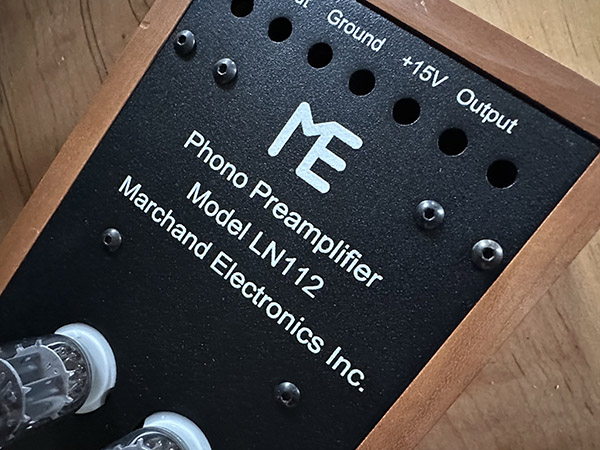
Listening Sessions
Lately, I’ve been researching the best-sounding pressings of my 1,000-plus Blue Note LP collection that I’ve purchased over the last 13 years, so I figured I’d continue right along with that research during my Marchand LN112 review.
The Blue Note LPs deployed for that purpose happen to be some key Rudy Van Gelder recordings. When he was firing on all fours, RVG’s work is some of the finest sounding jazz on record — not only his output on Blue Note, but also on Impulse!, Prestige, Savoy, CTI, and Vox. From his earliest days at Hackensack to his final years at Englewood Cliffs, New Jersey, RVG was nothing if not a mad experimenter. The master engineer began with spring reverbs and was also toying with digital fun near the end of his professional life. Like a true audiophile, RVG was always curious to hear something new, and glean its impact on his recordings.
The five pressings that a) fit the RVG directive and b) were used in this review are as follows: Larry Young’s Into Somethin’ (BLP 4187, 1965 New York mono pressing), Stanley Turrentine’s Easy Walker (BST 84268, 1968 Liberty stereo pressing), Jackie McLean’s Right Now! (BST 84215, 1967 Liberty stereo pressing), Dexter Gordon’s Dexter Calling (BST-84083, 1975 Liberty/UA pressing, with “RVG STEREO” in the deadwax), and Big John Patton’s The Way I Feel (BNST 84174, 1967 Liberty stereo pressing).
And, yes, the adage rings true: If some variation of Van Gelder’s stamp — i.e., “RVG,” “VAN GELDER,” and “RVG STEREO” — appears in the deadwax, then you’ve got a great-sounding Blue Note LP. Now, not all Blue Note pressings sound great, of course — and how could they? Fact is, no ten Blue Note pressings sound alike on a good hi-fi, but I digress. On with the review!
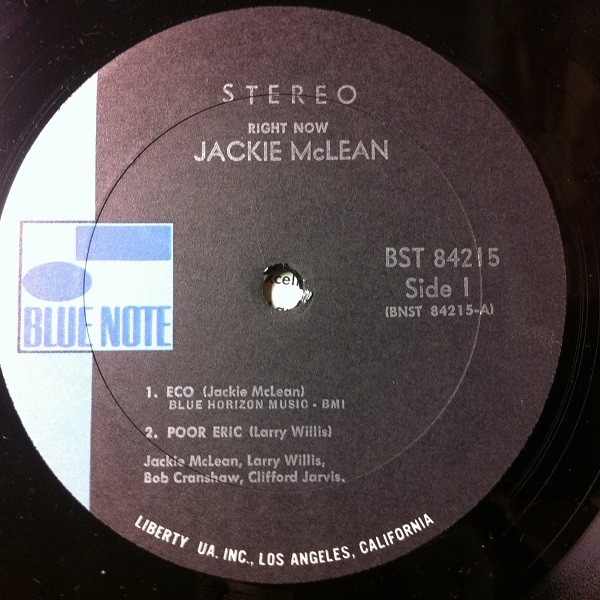
Kicking off these listening sessions with “Eco,” from Jackie McLean’s Right Now! LP (Side 1, Track 1), the Marchand LN112 captured the rhythmic drive and pungent tonality of McLean’s horn, not to mention the spirited nature of the ensemble with good energy and pacing. The Marchand communicated the drive and burning swell of the session well. While lacking meaty or articulate acoustic bass — a trademark of these old Blue Note LPs, mind you — it nonetheless sounded open, appealing, punchy. The sound was a little thin at times, and a mite forward, but was still quite engaging.
Spinning one of my all-time Blue Note favorites — the hurly-burly excitement of Stanley Turrentine’s Easy Walker — the Marchand LN112 once again punched hard and fast on the opening track, “Meat Wave.” A sliding, skidding, popping number driven by the mighty drums of Mickey Roker, “Meat Wave” worked up a sweat, capturing all the nuance and intricacy of the players’ instruments in a decent-sized soundstage that left me wanting for little. Bass was lean, but the presentation was open and exhilarating.
Wondering if the LN112 was simply lean, I next played Larry Young’s B3 Hammond organ treatise, Into Somethin’. Here, the phono preamp revealed all the low-end throb and grind of Young’s foot pedals, producing a layer of warmth that washed over me like the surf at Waikiki. Piano was practically buried in the mono mix and the drums were faint, but the sound was communicative and engaging.
For comparison, I also played these same five Blue Note recordings using my Tavish Design Adagio phono preamp (SRP: $2,200). The Tavish admittedly trumped the Marchand in terms of its much larger stage, greater slam, more sensual and physical presentation, and increased sense of presence and punch — but, that being said, do keep in mind the $800 price-point differential between these two models.
Back in the more directly comparable $1,400 range, the Marchand LN112 will likely face serious competition from the Heed Audio Quasar III ($1,299) — a model that handles both MM and MC, and a phono preamp I enjoyed for years before purchasing my Tavish. Also in play in this dollar range are the Vertere Acoustics Phono-1 MkII ($1,395) and the Musical Surroundings Nova III ($1,500), among others — but the LN112 more than holds its own here.
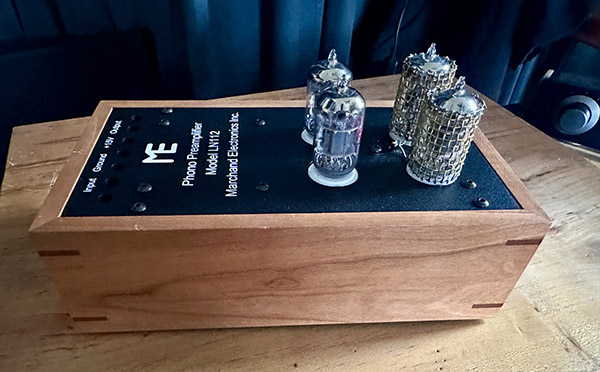
Conclusions
Overall, I had a great time listening to those five RVG Blue Note LPs with the Marchand Electronics LN112 phono preamp. As I mentioned back in the Setup section, the LN112’s lack of a power button was a bit of a nuisance — but, as Dr. Marchand noted in his earlier direct response, he will (hopefully) correct that soon enough. Other than that pesky nit, I can confirm the Marchand Electronics LN112 is a musical-sounding — and quite satisfying — MC tube phono preamp that, without question, deserves an audition, so I say go ahead and give it a shot.
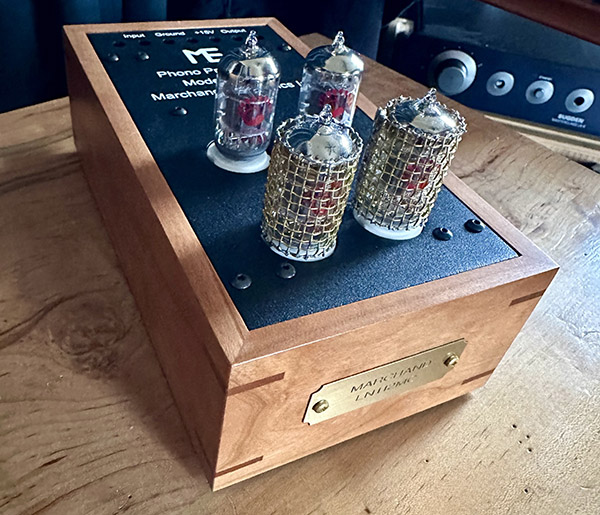
For more about Marchand Electronics, go here.
To find out how and where to buy Marchand Electronics products, go here.
Author bio: Former musician, former artist, and former legal wastrel Ken Micallef has written numerous hi-fi equipment reviews for Stereophile and Analog Planet, and his byline has also appeared within Mojo, Electronic Musician, and The Grammys. You can also find him at YouTube (Ken Micallef Jazz Vinyl Audiophile).
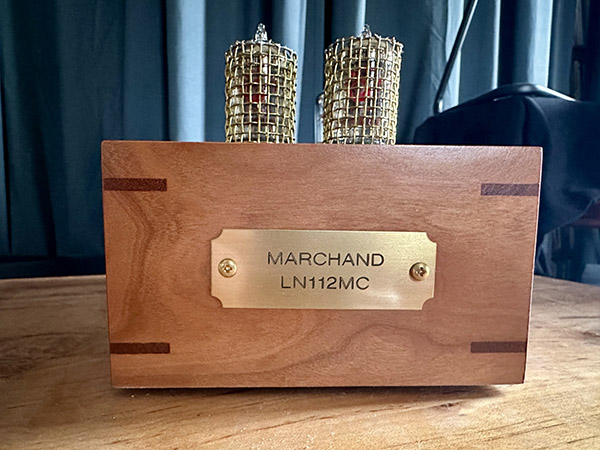

Is electrified so that any animal or human with aspirations to touch the friggin tubes will be deterred!
Nice.

Thanks for the coverage here, Ken.

Great emphatic comment on the Audioquest 707. I've been eyeing that unit for a few months since it's release. I wonder how it competes against the Niagra 1200. I should've asked Garth that direct question when I saw the unit a demo/record release party. Given the increased number of outlets on the 707, I guess I really shouldn't care.

Hi
On looking at the unit of such small size, I was wondering how the tube plate 240VDC is provided. So a tiny Switch Mode power supply (SMPS) is used instead of linear power supply to reduce the overall size of the preamp & the overall building cost to make it competitive in the low-end marketplace.
Yes, it would be OK for vinyl beginners or high school students who don't demand so much in view of selling price being so affordable.
But for skeptical vinyl ears, like yours truly's, thanks but no thanks.
NO Switch Mode power supply should ever be used in any audio amps, let alone MC/MM phono-preamps due to the RFI/EMI noises emitted from the SMPS inside the amp being extremely hard, if not impossible, to shield off.
But for such cheap selling price, what the heck !
JACK L

The Marchand post looked familiar, looked at the older posts and stumbled across this one from a few months ago, where you made the same comment. Seems like the manufacturer (and another) answered you regarding SMPS. Seems like they know what they are talking about.
https://www.analogplanet.com/content/marchand-ln112-mm-mc-tube-phono-preamp

Hi
You "seem" to listen their sales pitch of promoting SMPS - for smaller size & lower building cost to sell more in the low end audio market.
As I said in the above post, those with very limited budget for vinyl audio, "what the heck".
Like many knowledgeable audiophiles, I know too well what is the problem with SMPS though both Hagerman & Marchand denied it for the sake of marketing their products.
FYI, I did tested the RFI/EMI noise emitted by into the powerline by audio equipment installed with SMPS, e.g most commonly, CD/DVD players with my wideband EMI & powerline noise digital analyzer, let alone the RF noises emiited airborne which is very very hard, if not impossible, to shield off.
I know enough to dismiss sales pitching on SMPS !
Again, for those who want to save money, what the heck !
JACK L

It doesn't sound like a sales pitch when they explain that the noise is outside of the audible hearing range. But I will let Hagerman and Marchand explain their approach if they see this posting. I own several pricey phono preamps with and without SMPS; none exhibit any noise, at least none that my ears can pick up, and they sound lovely.
Benchmark has made one of the finest amps and DACS I have ever heard. Indeed, I covet their power amp and am considering purchasing it. They dropped linear power supplies a few years ago because they said they were noisier. Their explanations are similar to what Hagerman and others have said. Rectifiers from traditional power supplies make noise and are audible if they get close to sensitive circuits. A well-designed SMPS emits switching noise that is well above the audio band, and modern switchers also use spread spectrum clocking, which is an effective way to remove EMI or squash it to the point that it falls below the noise floor. Technology hasn't stood still, and SMPS are getting better and better. Having read and heard the results, I know who I believe and believe me, it ain't no sales pitch. Like someone said long ago "hearing is believing".
I enclose the link below.
https://benchmarkmedia.com/blogs/application_notes/152143111-audio-myth-...

... EAT E-Glo Petit and the Musical Fidelity M3x Vinyl.
https://www.europeanaudioteam.com/en/eat-e-glo-petit-wp000097.html
https://www.hifinews.com/content/eat-e-glo-petit-phono-preamp
https://www.musicalfidelity.com/products/m3series/m3x-vinyl
https://www.hifinews.com/content/musical-fidelity-m3x-vinyl-phono-preamp...

Hi
For those not-so-well-off budget-tighted vinyl fan, take a serious look at the US$399 MC/MM fully balanced I/P phonostage which worths hundred times of its cheap price:
"For only $399, any audio Joe Blow can own a non-hybrid solid state phono-preamp of much better design:
Schiit Audio's new $399 Skoll MM/MC phono preamp features fully discrete, differential Class A zero feedback gain stages and a fully passive RIAA network. No op-amps are in the circuit. Skoll’s gain stage is a compound JFET-BJT pair running on "massive" 64V rails for enhanced linearity and freedom from overload. The result is over 100dB signal to noise ratio for 40dB of gain, and up to 70dB of gain available.
Design/built in USA.
Be vinyl smart & sales pitch smart !
JACK L

... only $99, there's the ifi ZEN Air Phono.
https://ifi-audio.com/products/zen-air-phono/
https://ifi-audio.com/wp-content/uploads/2022/10/ZENAirPhono_HiFiWorld_S...